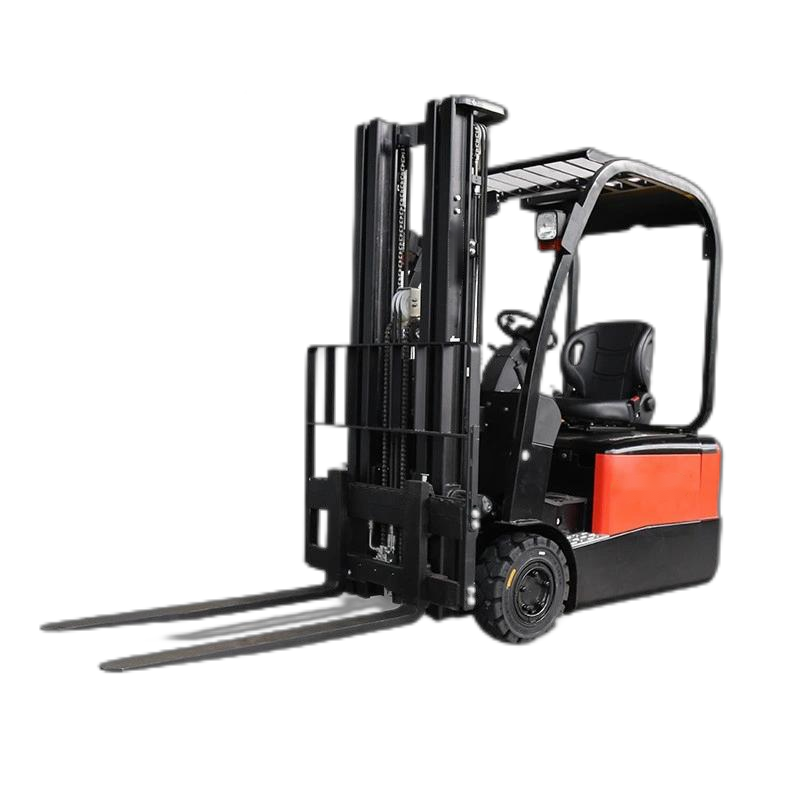I. Market Experiences Explosive Growth, and a Hundred-Billion-Yuan Track Has Kicked Off
By 2025, the market scale of new energy electric forklifts in China will exceed 100 billion yuan, with a compound annual growth rate of over 20%. This growth stems from two major driving forces:

Surging demand from logistics and e-commerce: The expansion of e-commerce has driven a revolution in warehouse efficiency. With their low noise, zero emissions, and high flexibility, electric forklifts have become core equipment for warehouse management. In 2023, the market scale had already exceeded 20 billion yuan, and it is expected that by 2025, the global market share will account for over 70%.
Green transformation of the manufacturing industry: Under the dual carbon goals, traditional fuel forklifts are gradually being replaced. Breakthroughs in lithium battery technology (such as increased energy density and faster charging) have further reduced usage costs, promoting their popularization in industries such as automobile manufacturing and food and beverage.
II. Core Advantages: A "Versatile" Solution for Cost Reduction and Efficiency Improvement
Environmentally friendly and energy-saving: With no tailpipe emissions and low-noise design, they conform to the concept of green and low-carbon development. Data shows that as of 2020, the stock of electric forklifts in China had reached 1 million units, reducing carbon dioxide emissions by over 1 million tons.
Cost advantages:
Low long-term operating costs: Energy consumption is only 1/5 that of fuel forklifts, and maintenance costs are even lower (no need to change engine oil, and battery life is 5 - 8 years).
Policy subsidy support: Many places offer purchase subsidies (up to 10%), tax exemptions, and mandate the installation of charging piles in logistics parks.
High-efficiency operation:
Flexible operation, suitable for working in narrow spaces, improving warehouse space utilization.
Equipped with intelligent systems (such as unmanned driving and Internet of Things monitoring), logistics efficiency is improved by over 30%.
III. Full Coverage of Application Scenarios, from Warehousing to High-End Manufacturing
Electric forklifts have penetrated into more than 20 sub-sectors, including:
Traditional scenarios: Ports, factories, airports, etc., where they complete tasks such as cargo loading and unloading and stacking.
Emerging fields: Cold chain, semiconductor manufacturing, medicine, etc. For example, the demand for ultra-low temperature cold storage forklifts has increased by 40%.
Special needs: Explosion-proof forklifts are used in dangerous goods warehouses, and narrow aisle forklifts improve space utilization.
IV. Future Trends: Advancing in Intelligence and Globalization
Technology upgrades:
Lithium batteries replace lead-acid batteries, with charging efficiency increased by 50%, supporting rapid replacement.
Expansion of intelligent functions, such as automatic navigation and cargo recognition systems, promoting logistics automation.
Market expansion:
The export proportion increases to 15% globally, with a focus on covering regions along the Belt and Road Initiative, such as Southeast Asia and the Middle East.
V. Purchase Recommendations: How to Choose High-Cost-Performance Equipment?
Scenario adaptation: Choose compact models for narrow spaces and heavy-duty models for heavy-load scenarios.
Battery selection: Lithium batteries charge quickly (fully charged in 1 hour) and have a long service life, making them suitable for high-frequency use scenarios.
Cost analysis: The initial investment is slightly higher, but long-term operating costs are reduced by 30% - 50%. It is necessary to evaluate based on the scale of the enterprise.
Conclusion
Electric forklifts are not only the "green engine" of the logistics industry but also a key tool for enterprises to move towards high efficiency and sustainable development. Under the triple resonance of policy, technology, and market, this track is welcoming a golden decade. Choosing electric forklifts that match the scenario and focusing on intelligence and battery life will help enterprises maximize cost compression and long-term returns.





